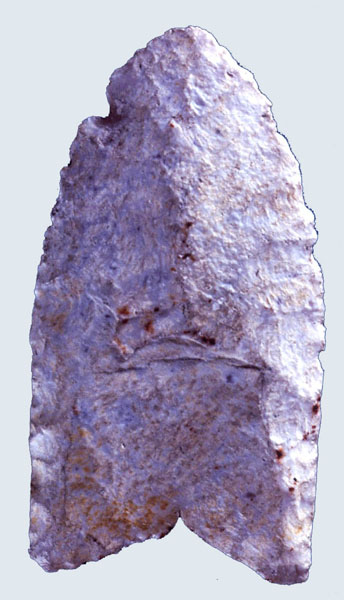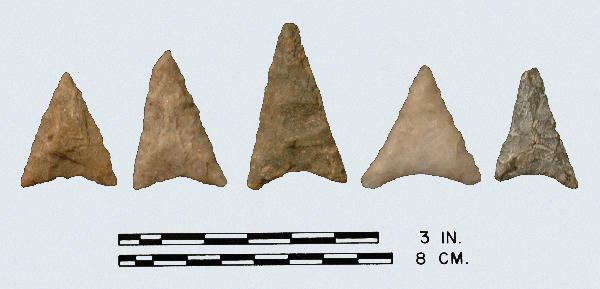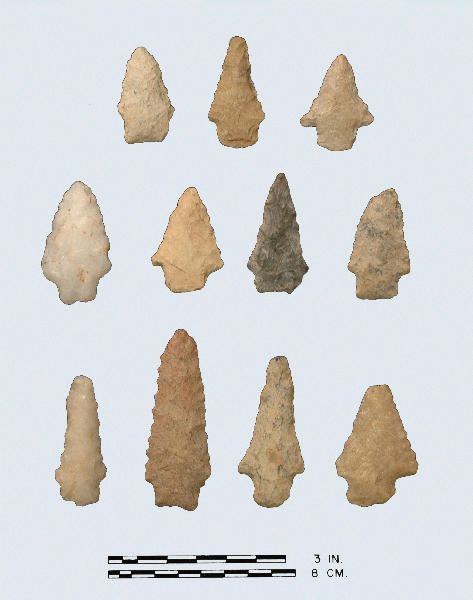
Kirk Serrated: Top Row: rhyolite, tuff, tuff; Middle Row: quartz, tuff, rhyolite, rhyolite; Bottom Row: quartz, quartzite, rhyolite, quartzite.
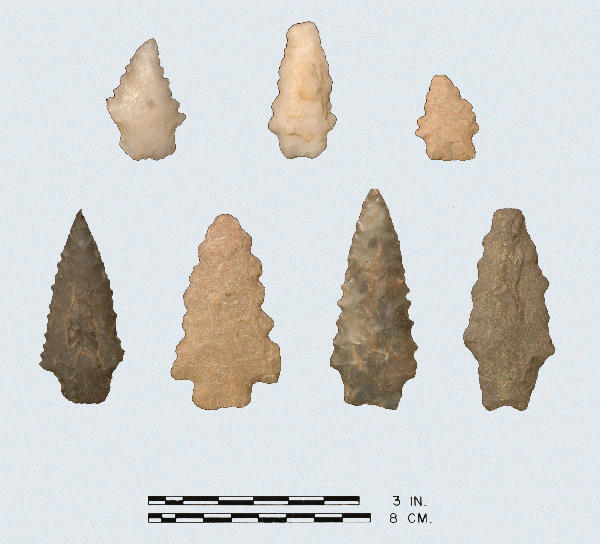
Kirk Serrated: Top Row: quartz, quartz, rhyolite; Bottom Row: rhyolite, quartzite, chert, quartzite.
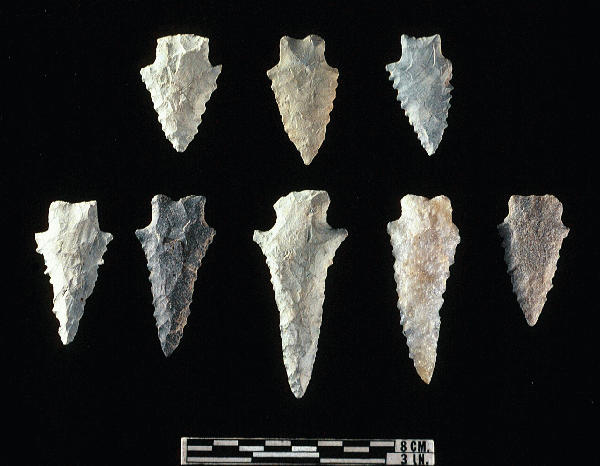
Kirk Serrated: William Allgood Collection.
Type Square Middle-Archaic
Defining Attributes
The Kirk Serrated point has a long, narrow blade with deep serrations and a broad square stem.
Chronology
The Kirk Serrated point dates to the Early to Middle Archaic transition period, 6200 to 5700 BCE. Coe (1964) discusses the three varieties of Kirk projectile points recovered from the Hardaway Site in the Piedmont of North Carolina. He notes that the three Kirk types (Corner Notched, Stemmed, and Serrated) overlie the earlier Palmer and Hardaway forms, but underlie the Stanly and later styles. At the Hardaway Site, there is evidence to show that the Kirk Corner Notched appeared first and was most numerous in the lower level, while the Kirk serrated was most plentiful in the upper level. The Rose Island Site, Tennessee, produced a date of 6070 +/- 190 BCE in associated with the Kirk Serrated (Chapman 1975). At the West Blennerhassett Site (46Wd83-A) in West Virginia, multiple hearths associated with the Kirk Serrated type were radiocarbon dated to between 6125 and 5810 BCE (Johnson et al. 2007). McAvoy (1997) places the point at about 6000 BCE along the Nottoway.
Description
- Blade: The blade is long, narrow, and relatively thick. The sides are always straight or nearly straight and deeply serrated.
- Base: The base is usually straight and blunt, but occasionally thinned and concave. The stem is always broad and nearly square. The width of the stem is usually about two-thirds of the width of the blade.
- Size: Length ranges from 40 to 120 mm. Width ranges from 20 to 35 mm. Thickness ranges from 5 to 12 mm.
- Technique of manufacture: The basic blade appeared to have been made with broad, shallow percussion flakes. The edges were then shaped by pressure flaking, and the serrations were made as a final step. The short flake scars produced by the serrations indicate that this was done after the basic blade has been shaped.
Discussion
Coe (1964) notes that there is a strong suggestion of continuity of style which developed from the Palmer Corner Notched into the Kirk Corner Notched, thence into the Kirk Stemmed and the Kirk Serrated and, subsequently into the Stanly Stemmed, to finally terminate in the Savannah River Stemmed point type. Johnson et al. (2007) has noted confusion in the literature in the discussion of Kirk Stemmed vs. Kirk Serrated, ‘particularly as the “stemmed” variety often displays a serrated blade, while the “serrated” variety frequently displays an unserrated blade.’
Defined in Literature
Coe (1964) originally defined the type based on points recovered from the Hardaway Site in the Piedmont of North Carolina.
References

